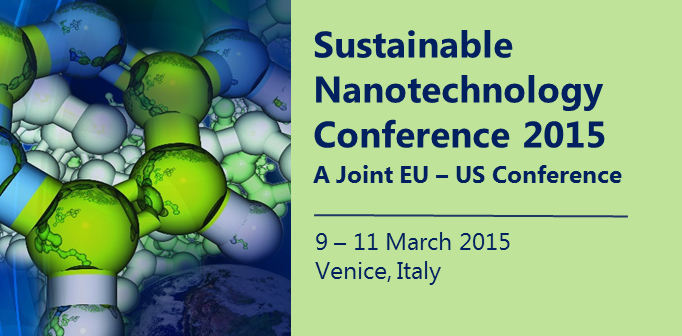Speaker
Maria Diez-Ortiz
(LEITAT, Spain)
Description
Additional Authors:
- David Hernández-Moreno ([email protected]). Instituto Nacional de Investigación y Tecnología Agraria y Alimentaria (INIA), Carretera de la Coruña Km 7.5, Madrid, Spain.
- Juan José Izquierdo ([email protected]). Instituto Nacional de Investigación y Tecnología Agraria y Alimentaria (INIA), Carretera de la Coruña Km 7.5, Madrid, Spain.
- Dave Spurgeon ([email protected]). NERC Centre for Ecology & Hydrology, Molecular Ecotoxicology, Acremann Section, Maclean Building, Benson Lane Crowmarsh Gifford, OX10 8BB United Kindgom
- Magriet Park ([email protected]). National Institute for Public Health and the Environment, Centre for Health Protection PO box 1 3720BA Bilthoven, The Netherlands
- Natalia Ferraz ([email protected]). Uppsala University, Division of Nanotechnology and Functional Materials. Box 534. 75121 Uppsala, Sweden.
- Julia Catalán ([email protected]). Finnish Institute of Occupational Health Topeliuksenkatu 41 b FI-00250 Helsinki, Finland
- Socorro Vázquez-Campos ([email protected]). LEITAT Technological Center. Center, Innovació 2, 08225 Terrassa, Spain
- Claus Svendsen ([email protected]). NERC Centre for Ecology & Hydrology, Molecular Ecotoxicology, Acremann Section, Maclean Building, Benson Lane Crowmarsh Gifford, OX10 8BB United Kindgom
Abstract: GUIDEnano aims at developing an interactive web-based Guidance Tool to support the risk assessment and risk management of a nano-enabled product. A first step will be to assess the possibility to use existing hazard assessments for similar materials, by assessing similarity between the exposure-relevant and the already tested nanomaterials (NMs). This will be done by using a set of predefined read-across criteria that will lead to a similarity score for each property evaluated. As a second step, in cases where the exposure-relevant material is not sufficiently similar to any of the previously assessed materials, the Tool would base the hazard assessment on individual studies available for the NM of interest. Each individual study would be evaluated for two aspects: its reliability and the similarity of the tested NM to the exposure relevant NM. Within the reliability concept, we include the combination of the Klimisch score and a specific nano score. A minimum score for these two aspects will be needed to use such test data for the derivation of the final predicted non effect concentration (PNEC) value and, in such cases, the score will also inform on the uncertainty around it. A third and final step, the use of general categories of NMs and associated default hazard values is considered.
Primary author
Gemma Janer
(LEITAT, Spain)
